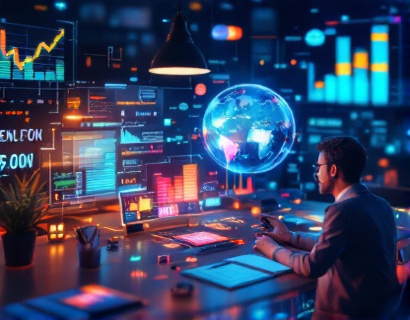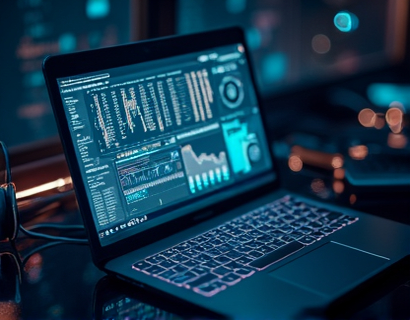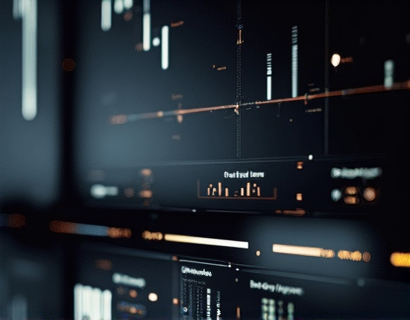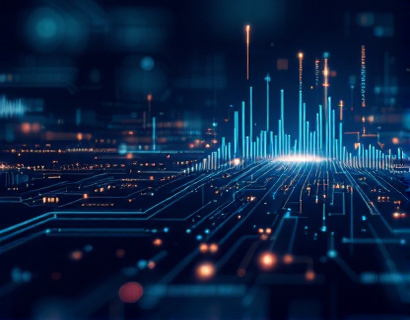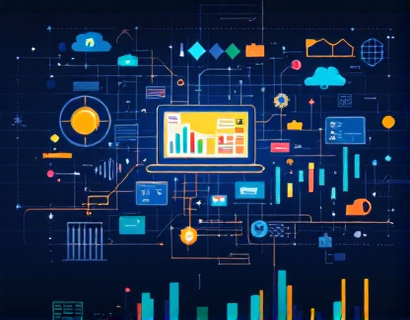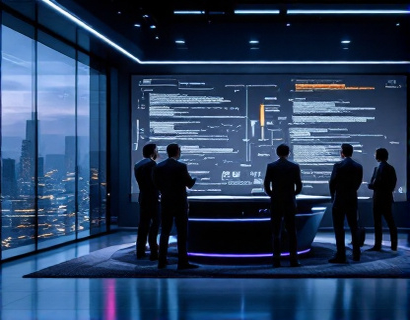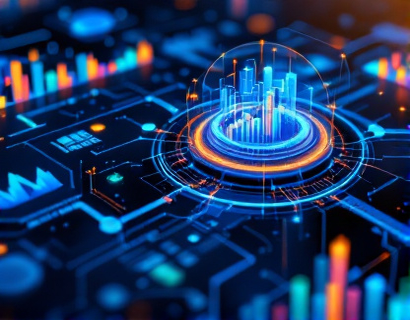Unlocking Next-Gen Productivity with AI and Crypto: A Deep Dive into Innovative Digital Solutions
The intersection of artificial intelligence (AI) and cryptocurrency is paving the way for unprecedented advancements in digital productivity tools. Tech innovators and early adopters are at the forefront of this revolution, leveraging these technologies to redefine efficiency and task management in the modern workplace. This article explores how AI and cryptocurrency are merging to create cutting-edge solutions that enhance productivity, streamline processes, and unlock new possibilities for digital transformation.
Understanding the Synergy Between AI and Cryptocurrency
The synergy between AI and cryptocurrency lies in their shared foundation of decentralization, transparency, and security. AI, with its ability to process vast amounts of data and learn from patterns, combined with the immutable and secure nature of blockchain technology, creates a powerful duo for developing innovative digital solutions. This synergy is particularly beneficial in the realm of productivity tools, where efficiency and reliability are paramount.
AI-Powered Task Management Systems
One of the most significant applications of AI in enhancing productivity is through advanced task management systems. These systems utilize machine learning algorithms to predict task priorities, automate routine tasks, and provide intelligent suggestions to users. For instance, an AI-driven task manager can analyze a user's work patterns and suggest the optimal time to tackle specific tasks based on historical data and current workload. This not only saves time but also reduces cognitive load, allowing users to focus on high-value activities.
Moreover, AI can integrate with calendar applications to automatically schedule meetings, send reminders, and even propose alternative times when conflicts arise. This level of automation ensures that users stay organized and on track, minimizing the risk of missed deadlines and forgotten tasks. The integration of natural language processing (NLP) further enhances these systems, enabling users to interact with their task managers using voice commands or natural language queries.
Cryptocurrency-Driven Incentive Mechanisms
Cryptocurrency introduces a novel approach to incentivizing productivity and collaboration. By leveraging blockchain technology, organizations can create token-based systems that reward users for completing tasks, contributing to projects, or achieving specific milestones. These tokens can be used within the organization's ecosystem or exchanged for other cryptocurrencies or fiat currency, providing a flexible and motivating reward structure.
For example, a decentralized work platform can implement a token system where contributors earn tokens for completing tasks, reviewing peer work, or participating in community discussions. These tokens can be used to access premium features, participate in governance decisions, or even traded for other assets. This not only boosts motivation but also fosters a sense of community and shared purpose among users.
Decentralized Identity and Access Management
AI and cryptocurrency together can revolutionize identity and access management in the workplace. Traditional identity management systems are often centralized, vulnerable to breaches, and cumbersome to manage. By utilizing blockchain-based identity solutions, organizations can create secure, decentralized identity verification systems that empower users to control their digital identities.
AI can enhance these systems by analyzing user behavior and detecting anomalies in real-time, providing an additional layer of security. For instance, an AI-powered system can monitor login attempts, device usage, and other activity patterns to identify potential security threats and alert administrators. This proactive approach ensures that only authorized users access sensitive information and systems, maintaining the integrity and confidentiality of organizational data.
Smart Contracts for Automated Workflows
Smart contracts, self-executing contracts with the terms directly written into code, can significantly streamline workflows and reduce the need for intermediaries. When combined with AI, smart contracts can become even more powerful, adapting to changing conditions and executing tasks based on predefined criteria.
For example, in a project management context, a smart contract can automatically release payment to a vendor once certain milestones are met, verified by AI-driven audits. This not only accelerates the payment process but also reduces the risk of disputes and errors. AI can further optimize these contracts by analyzing historical data to predict potential bottlenecks and suggest improvements to the workflow.
Enhanced Data Analytics and Insights
AI-driven data analytics tools, powered by blockchain for data integrity, can provide unprecedented insights into organizational performance and user behavior. These tools can process large datasets from various sources, identifying trends, patterns, and actionable insights that would be impossible to discern manually. The immutable nature of blockchain ensures that data remains tamper-proof, enhancing trust and reliability in the analytics process.
For instance, an AI-powered analytics platform can track user interactions with productivity tools, providing detailed reports on usage patterns, efficiency gains, and areas for improvement. This data can be used to refine tools, tailor user experiences, and make data-driven decisions to optimize workflows. The integration of cryptocurrency can further incentivize data contribution, with users earning tokens for sharing relevant data or participating in data validation processes.
Security and Privacy in AI and Crypto Solutions
Security and privacy are paramount in the development of AI and crypto-based productivity solutions. Blockchain technology inherently provides a high level of security through its decentralized and immutable ledger, making it an ideal foundation for secure applications. AI can complement this by enhancing security measures, such as detecting and mitigating cyber threats in real-time.
Privacy-preserving techniques, such as zero-knowledge proofs and homomorphic encryption, ensure that sensitive user data remains confidential while still being useful for AI algorithms. This balance between utility and privacy is crucial for building trust and adoption among users. Organizations must prioritize these aspects to create solutions that are not only powerful but also secure and respectful of user privacy.
Future Trends and Innovations
The future of AI and crypto in productivity tools is promising, with several emerging trends and innovations on the horizon. One such trend is the integration of augmented reality (AR) and virtual reality (VR) with AI and blockchain, creating immersive and interactive work environments. These technologies can enhance collaboration, training, and remote work experiences, making them more engaging and effective.
Another area of innovation is the development of AI-driven digital assistants that can seamlessly integrate with various productivity tools and services. These assistants can act as central hubs, coordinating tasks, managing schedules, and providing real-time insights, all while ensuring data security and privacy. The use of cryptocurrency can further enhance these assistants by providing decentralized and secure payment and incentive mechanisms.
Additionally, the rise of Web3 and decentralized applications (dApps) is set to transform the way we interact with digital services. AI and blockchain will play crucial roles in this evolution, enabling more autonomous, user-controlled, and secure applications. The potential for decentralized marketplaces, autonomous organizations, and community-driven projects is vast, offering new opportunities for innovation and collaboration.
Conclusion
The convergence of AI and cryptocurrency is unlocking new frontiers in digital productivity, offering tech innovators and early adopters a wealth of opportunities to enhance efficiency, security, and collaboration. By leveraging these cutting-edge technologies, organizations can create next-generation productivity tools that not only streamline workflows but also empower users to achieve more. As the landscape continues to evolve, the potential for further innovation and transformation remains immense, promising a future where productivity knows no bounds.



